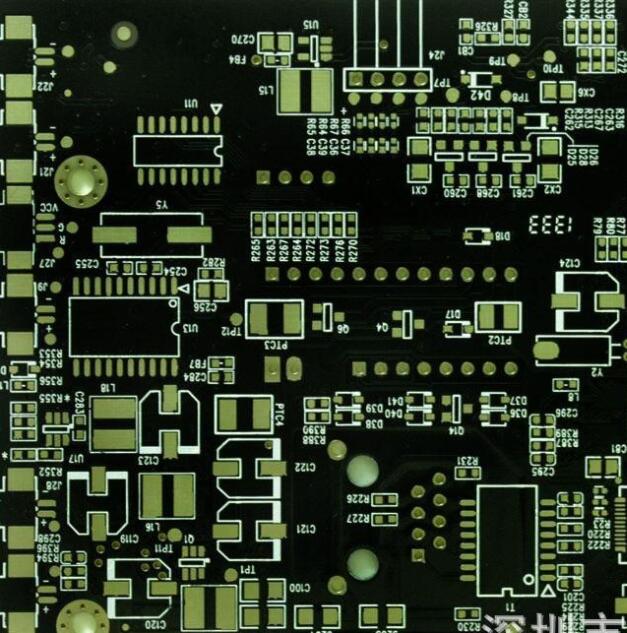FPC reflow soldering
The forced hot air convection infrared reflow oven should be used, so that the temperature on the FPC can be changed more uniformly, and the occurrence of poor soldering can be reduced. If you use single-sided tape, because you can only fix the four sides of the FPC, the middle part is deformed under hot air, the pad is easily inclined, and the molten tin (liquid tin at high temperature) will flow, resulting in empty soldering, continuous soldering, Tin beads make the process defect rate higher.
1) Temperature curve test method:
Due to the different heat absorption properties of the carrier board and the different types of components on the FPC, the temperature rises at different speeds after being heated during the reflow soldering process, and the heat absorbed is also different. Therefore, carefully set the temperature curve of the reflow oven to improve the quality of soldering. Great influence. A safer method is to place two FPC-equipped carrier boards before and after the test board according to the carrier board interval during actual production. At the same time, mount the components on the FPC of the test carrier board, and use high-temperature solder wire to test the temperature. The probe is welded on the test point, and the probe wire is fixed on the carrier board with a high-temperature adhesive tape. Note that the high temperature resistant tape cannot cover the test point. The test points should be selected near the solder joints and QFP pins on each side of the carrier board, so that the test results can better reflect the real situation.
Setting of temperature curve:
In the furnace temperature debugging, because the FPC's temperature uniformity is not good, it is best to use the temperature curve method of heating/heat preservation/reflow, so that the parameters of each temperature zone are easier to control, and the FPC and components are affected by thermal shock. Some. According to experience, it is best to adjust the furnace temperature to the lower limit of the solder paste technical requirements. The wind speed of the reflow furnace is generally the lowest wind speed that the furnace can use. The chain of the reflow furnace should be stable and free of jitter.
FPC inspection, testing and sub-board:

Since the carrier plate absorbs heat in the furnace, especially the aluminum carrier plate, the temperature is higher when it is out of the furnace, so it is best to add a forced cooling fan at the furnace outlet to help cool down quickly. At the same time, operators need to wear heat-insulating gloves to avoid being burned by the high-temperature carrier. When taking the soldered FPC from the carrier board, the force should be even, and brute force should not be used to prevent the FPC from being torn or creases.
The removed FPC is visually inspected under a magnifying glass of more than 5 times, focusing on the inspection of residual glue on the surface, discoloration, gold finger staining, tin bead, IC pin empty welding, continuous welding and other problems. Since the surface of FPC cannot be very smooth, which makes the AOI misjudgment rate high, FPC is generally not suitable for AOI inspection, but by using special test fixtures, FPC can complete ICT and FCT tests.
Since FPC is mostly connected to the board, it may be necessary to split the board before testing the ICT and FCT. Although the splitting operation can also be completed using tools such as blades and scissors, the operation efficiency and quality of the operation are low, and the scrap rate is high. If it is mass production of special-shaped FPC, it is recommended to make a special FPC stamping and splitting die, which can greatly improve the work efficiency. At the same time, the edges of the punched FPC are neat and beautiful, and the internal stress generated during stamping and cutting is very low. Can effectively avoid solder joint cracking.
In the assembly and welding process of PCBA flexible electronics, the precise positioning and fixing of FPC are the key points. The key to fixing is to make a suitable carrier board. Followed by FPC pre-baking, printing, placement and reflow soldering. Obviously, the SMT process of FPC is much more difficult than PCB hard board, so it is necessary to accurately set process parameters. At the same time, strict production process management is also important. It is necessary to ensure that operators strictly implement every regulation on SOP and follow the line. Engineers and IPQC should strengthen inspections, find abnormal conditions in the production line in time, analyze the causes and take necessary measures to control the defect rate of the FPC SMT production line within dozens of PPM.
In the PCBA production process, a lot of machinery and equipment are needed to assemble a board. Often the quality level of a factory's machinery and equipment directly determines the manufacturing capacity.
The basic equipment required for PCBA production includes solder paste printer, placement machine, reflow soldering, AOI detector, component clipper, wave soldering, tin furnace, washing machine, ICT test fixture, FCT test fixture, For aging test racks, PCBA processing plants of different sizes will have different equipment.